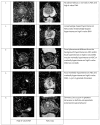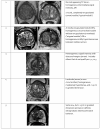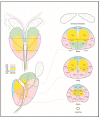Advances and Challenges in Prostate Cancer Diagnosis: A Comprehensive Review
- PMID: 40647437
- PMCID: PMC12248846
- DOI: 10.3390/cancers17132137
Advances and Challenges in Prostate Cancer Diagnosis: A Comprehensive Review
Abstract
Prostate cancer is the most commonly diagnosed malignancy in men and continues to be a leading cause of cancer-related mortality. Accurate and timely diagnosis is essential for distinguishing clinically significant tumors from indolent lesions and for informing treatment decisions. Multiparametric magnetic resonance imaging (mpMRI) has revolutionized prostate cancer detection by enabling precise lesion localization, risk stratification, and improved biopsy targeting. Fusion biopsy, which combines mpMRI findings with real-time transrectal ultrasonography (TRUS), has emerged as a highly effective method for sampling suspicious lesions. This review provides an integrated anatomical, epidemiological, technical, and clinical overview that highlights the evolving role of fusion biopsy in contemporary prostate cancer diagnostics. We also explore emerging strategies such as penumbra-targeted sampling, discuss ongoing clinical challenges, and examine the impact of biopsy underestimation and lack of standardization. Compared to conventional systematic biopsy, mpMRI-TRUS fusion biopsy improves the detection of clinically significant prostate cancer while reducing the overdiagnosis of low-risk tumors. To our knowledge, few recent reviews have comprehensively synthesized current clinical guidelines, emerging biopsy techniques, and future directions within a single narrative. mpMRI-TRUS-guided fusion biopsy represents a major advancement in the prostate cancer diagnostic pathway, promoting precision oncology by reducing overtreatment and facilitating individualized patient care. This review aims to assist clinicians in adopting biopsy innovations that enhance diagnostic accuracy and improve patient outcomes.
Keywords: PI-RADS; combined fusion biopsy; early detection; fusion biopsy; multiparametric magnetic resonance imaging (mpMRI); prostate biopsy; prostate cancer; prostate-specific antigen (PSA); targeted biopsy; transrectal ultrasonography (TRUS).
Conflict of interest statement
The authors declare no conflicts of interest.
Figures








References
-
- Raporty | Krajowy Rejestr Nowotworów. [(accessed on 19 April 2025)]. Available online: https://onkologia.org.pl/pl/raporty.
Publication types
LinkOut - more resources
Full Text Sources
Research Materials
Miscellaneous

